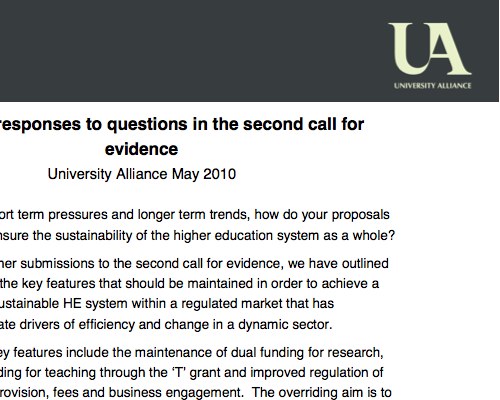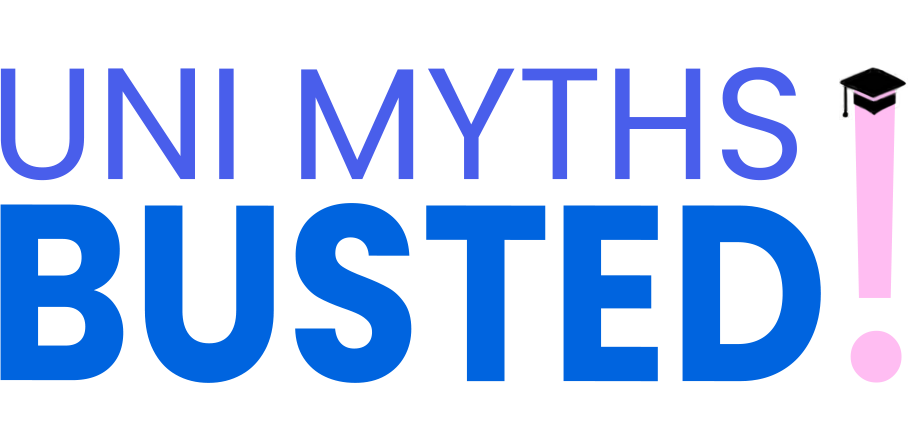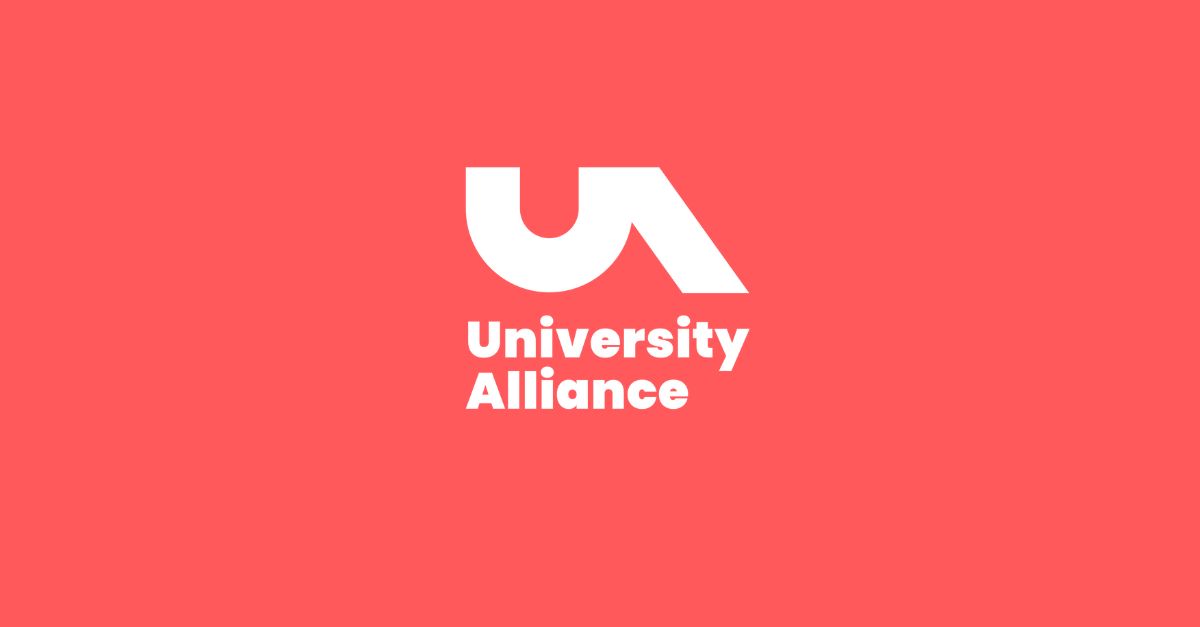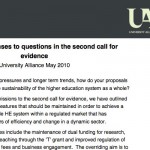 Headline responses Review questions
Headline responses Review questions
In light of short term pressures and longer term trends, how do your proposals for reform ensure the sustainability of the higher education system as a whole?
In our other submissions to the second call for evidence, we have outlined some of the key features that should be maintained in order to achieve a stable, sustainable HE system within a regulated market that has appropriate drivers of efficiency and change in a dynamic sector.
These key features include the maintenance of dual funding for research, core funding for teaching through the ‘T’ grant and improved regulation of private provision, fees and business engagement. The overriding aim is to ensure that the various incentives and drivers within this regulated, complex market are operating in a way that is in the best interests of the sector, Government and UK economy.
In relation to our specific proposals for a Graduate Contribution Scheme, the most critical point must be to design a system that can enable additional private contribution (whilst maintaining access) without increasing the cost to the state.
We have also repeatedly emphasised the central importance of recognising and addressing the gulf of opinion that separates the public (who are opposed to fees in principle) and the sector and wider stakeholders (who wish to achieve a fair mechanism to increase private contribution). We believe that moving to a Graduate Contribution Scheme will help to address this gulf of opinion whilst allowing the main structures of the current system to be reformed.
 HEFCE teaching funding vs. a voucher system
HEFCE teaching funding vs. a voucher system
Universities operate in a complex, semi-regulated market. As largely autonomous institutions in receipt of public funding, they operate within an intricate eco-system of regulation, funding or market incentives from a wide range of sources (public and private) and well-established hierarchies.
UK universities operate a non-standardised system of degree classifications and are mostly self-regulating through the QAA with HEFCE operating as a financial regulator in relation to use of public funding. The ‘UK HE’ brand as a whole is based on quality and, therefore, the drivers for high quality provision and self- regulation on standards are very strong. Given the nature of academic culture, these have always been innate within the system with few exceptions.
The autonomy of institutions has been shown to have a direct correlation with the quality of a system, with the UK recognised as being distinct in both its level of autonomy and quality. A separate funding body for universities, at arms length from Government, has existed since the early 1900s. Successive Governments have sought a balance between directing investment in high-level skills and research, requiring accountability for that public investment whilst allowing the sector to be sufficiently autonomous so as to achieve its position as one of the best HE sectors in the world.
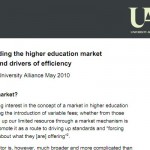 Understanding the higher education market
Understanding the higher education market
There has been increasing interest in the concept of a market in higher education over recent years following the introduction of variable fees; whether from those who believe that “dividing up our limited resource through a market mechanism is wrong”1; or those who promote it as a route to driving up standards and “forcing institutions to think hard about what they [are] offering”2.
The higher education sector is, however, much broader and more complicated than this would suggest. Universities operate in a long-established, complex, semi- regulated market that not only pre-dates the introduction of fees for home, undergraduate students but was only marginally affected by their introduction.
As largely autonomous institutions in receipt of public funding, universities operate within an eco-system of regulation, funding and market incentives from a wide range of sources (public and private) and well-established hierarchies.
Universities do not undertake a single function but instead operate a set of interdependent and mutually reinforcing activities. This is not just about the inseparability of teaching and research but also about the close partnership working through knowledge exchange, business engagement and private enterprise. If you take the delivery of high-level skills for economic growth as one example, universities are working to balance supply and demand of applications against a number of funding streams and the needs of business. Universities are then working in partnership with the students within a research-informed learning environment that aims to equip them for change in the 21st century. All of this has to take place within a regulatory framework for standards and an accountability framework for the use of public funds.
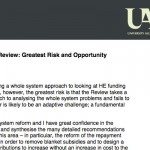 Greatest Risk and Greatest Opportunity
Greatest Risk and Greatest Opportunity
The Review is, quite rightly, taking a whole system approach to looking at HE funding and student finance. In my view, however, the greatest risk is that the Review takes a mechanistic or structural approach to analysing the whole system problems and fails to recognise that the biggest barrier is likely to be an adaptive challenge; a fundamental conflict of values.
It is clear that there is need for system reform and I have great confidence in the Review team’s ability to analyse and synthesise the many detailed recommendations and submissions that deal with this area – in particular, the reform of the repayment system (or contribution system) in order to remove blanket subsidies and to design a system that enables private contributions to increase without an increase in cost to the state. I am equally confident that the Review team will be able to place this in the wider context of HE funding environment and make sensible recommendations.

